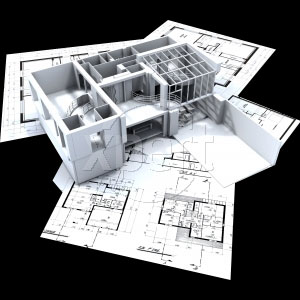Arguments from Design
One of the most common arguments that Christian apologists use for God's existence is the argument from design (teleological argument). It looks at both biological and astronomical systems then uses the observations in two different ways: to argue against naturalism and to argue for God's existence. The argument against naturalism basically argues that the designs and fine-tuning found in nature are so remotely improbable that an unguided universe would never produce them. The argument for God uses an analogy that compares man's designs to nature and concludes that since things we know are designed required an intelligence (man), then the designs we see in nature must also require a mind (God). (More in my post Paperclips and Design)One of the Critiques
This argument does have its critics. Most people like to target the biological evidence by pointing to what they believe to be bad or superfluous designs in nature. There are two ways to respond to this evidence. The first is to say that we need to continue to investigate the system, and in so doing, we will eventually find that the "bad" or "superfluous" design is balanced with something else and is actually necessary for multiple functional purposes and thus a good design (more on this in Bad Designs and the Pharmaceutical Industry). This response is sometimes criticized because it makes God into a hyper-engineer who is only concerned with function of his creation.An Alternative Offered
I've heard this offered by some philosophers and theologians who are not comfortable with saying that God is the "Divine Engineer", because they see many things in creation that don't seem to have a unique, functional purpose. Instead they prefer a second option: to think of God as being creative and not only concerned with efficiency of His creation to accomplish His purposes. Not that these philosophers and theologians are trying to do this, but it seems that a false dichotomy is being proposed: either God is Engineer or He is Artist. At the least, they do tend to prefer and describe God as one or the other- some generally, and others depending on the system that is being described.I see two problems here. The first is that it seems awfully disingenuous to look at a system and say that God was being creative when He created a useless feature or inefficient system, yet appeal to God's intelligence when we see something that is elegantly designed for the tasks it performs. This is a very ad-hoc and inconsistent response. The second problem is that we are compromising God's intelligence for His creativity and his creativity for his intelligence- as if beauty and function are incompatible with one another.
Taking It A Step Further- From Engineer to Architect
The artist has a purpose behind his works. The engineer has a purpose behind his designs. Both are purposeful. However, the purposes are only in competition, not incompatible. It is the goal of the architect to balance function and beauty. If we refer to God as the Divine Architect, neither functional purposes nor aesthetic purposes are dismissed- regardless of system we are describing. All systems have their purposes that must be balanced according to the weight of the different purposes. We have a single explanation that does not compromise God's creativity or His intelligence. Neither are we inconsistently changing our explanation "on the fly" to accommodate evidence.As with the positive form of the teleological argument, I am arguing from analogy. When we see the technology, the structures, and the works of art that man has produced, we recognize immediately that they are products of design. Many times we recognize that something was designed long before we identify the designer. In fact, I look around and I see numerous things that I will never identify who actually designed them, but I don't doubt that they were designed...whether it be my laptop, furniture, cabinetry, or my house itself: all these were designed with both function and appearance in mind (some things obviously have more of one than the other- they are weighted differently). Both engineering and artistry were required. When we look at nature and see where there may be a lack of function, we should not just stop investigating because that would confirm that it was not designed; instead we need to continue to investigate since we may very well find that the function has been balanced with beauty.
Conclusion
Humans balance competing purposes (including beauty and even entertainment) in their designs all the time. We would expect that the Creator of the human mind to not only be capable of the same, but to be able to accomplish it on a grander scale that the human mind may never completely be able to comprehend. Because of that, I don't expect that understanding God to be the Divine Architect will silence the critics of the teleological argument. As long as we don't understand even one of the Designer's purposes for a specific design, we will see something that could be "better" in that design. However, our understanding of God as Architect will help us to recognize and search for purposes other than just efficiency of function and realize that the creatures and systems presented as evidence of bad designs in nature are not as strong as the skeptic would like us to believe.To add more depth to this post please check out these posts:
I also highly recommend Dr. Hugh Ross' book "Why The Universe Is The Way It Is" for a discussion of twelve purposes found in scripture that can help answer many challenges to the teleological argument.

